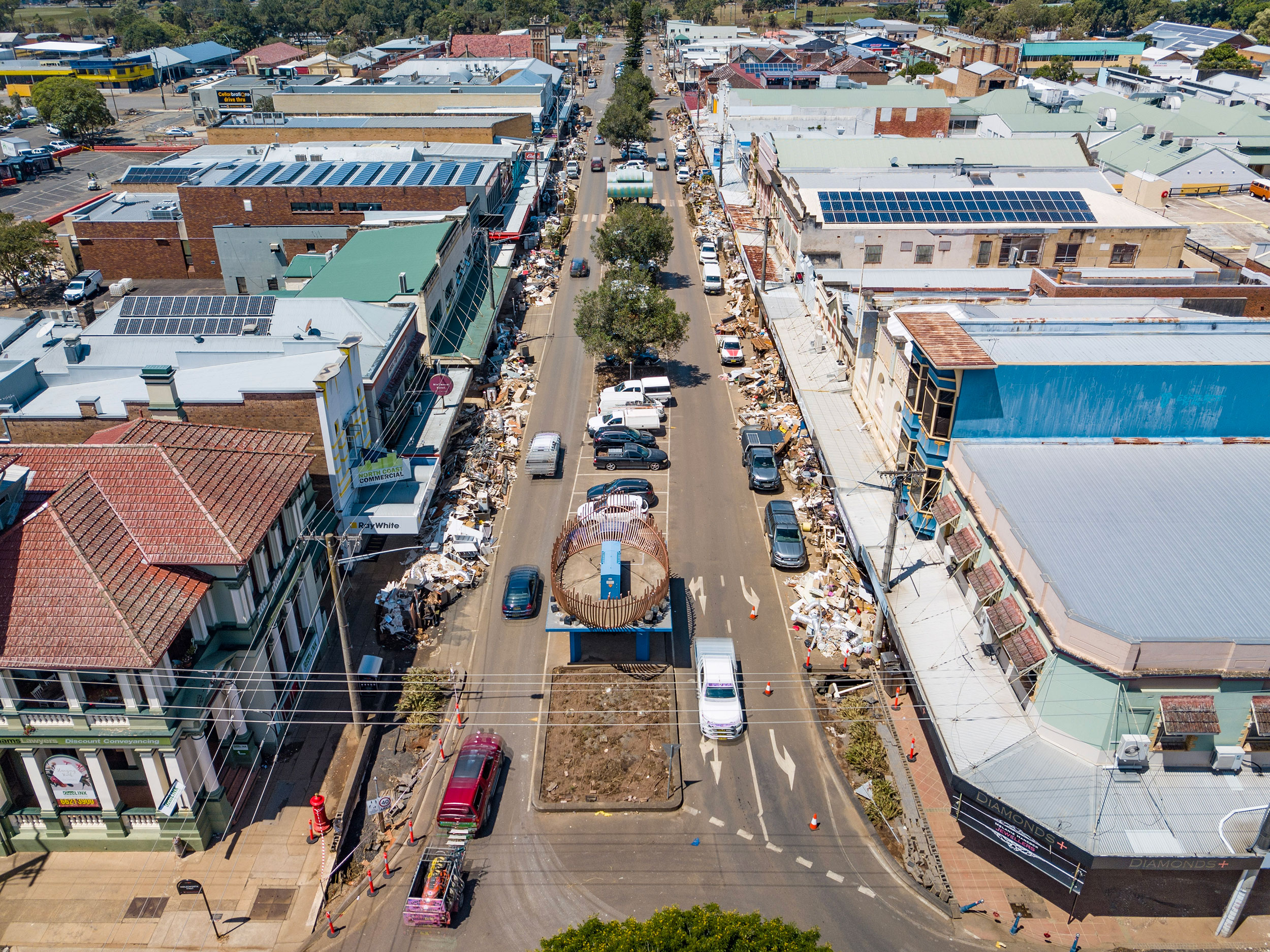Community-led Flood Recovery/Adaptation Proposal

The devastating February and March 2022 floods in the Northern Rivers impacted over 31,000 people which included loss of life, property damage, and emotional trauma. All 7 local government areas (LGAs) – Ballina, Clarence Valley, Kyogle, Richmond Valley, Byron, Lismore, and Tweed – were declared disaster zones.
The flood waters and landslides caused by the 2022 extreme climate event left 7,731 people in emergency accommodation, 5,303 homes uninhabitable, and 14,637 homes damaged. This compounded an existing housing crisis.
Communities stepped up to save each other, coordinated a massive search and rescue effort and led the post-flood response in the initial weeks, but were lacking supplies, downed communications, delayed emergency services with an uncoordinated ADF response. By the end of 2022, over half of flood victims remained in damaged homes while 44% lived in temporary shelters or with others; while 4% relocated out of the region.
What was proposed/promised by the Government?
After initial emergency funding, the NSW Reconstruction Authority (NSWRA) and Resilient Homes Program (RHP) were established. The RHP aimed to make flooded homes resilient through three options: wet-proofing retrofits with funding of $50k+50%, house raising with $100k+50%, or buybacks at pre-flood market value. The Government promised that homes that flooded in 2022 would be made resilient, and more than 6,000 applications were received.
However, the RHP received only $700m in 2022, which was known to be half the estimated need which was $1.5bn. The NSWRA’s focus on buybacks meant funding would not stretch to retrofitting and raising, despite these measures having the potential to make many more dwellings safely habitable. A raised home is a safe haven in a flood when there is no safe evacuation route or evacuation centre closeby. Eligibility criteria were also restricted to homes with floors below the 1-in-20 year flood level, greatly limiting the number of people who could receive assistance. Full funding would have enabled support for all those whose homes were impacted by the flood waters
The NSWRA announced a wide-ranging consultative program, but this did not materialise as planned neither has the promised case managers to assist with house raises and retrofits and consultation with the flooded residents about their needs. Promises were made that 6,000 people would be eligible for a total $1.5b spend across the RHP and the Resilient Land Program (RLP). Additionally, over $400m has been spent on temporary accommodation including pod-villages and at-home caravans, some of which are located on floodplains.
What has actually been done since the 2022 flood?
The community feels abandoned with so little delivered relative to what was promised and needed. There are many questions of whether taxpayer money has been wasted, whilst many in the community are unsupported and vulnerable to future disasters.
What does the community propose?
The communities that stepped up in the crisis across the 7 LGAs have the lived experience, skills, local knowledge and support to help lead the recovery – we need a seat at the table. With expert input, transparency from authorities, participation and the space to deliberate, we can develop a vision to respond to emergencies, disasters and prepare for the future. We urge you to work with us, the people from the 7 LGAS affected, to make this happen.
1 We support the existing Terms of Reference (TOR) of the Community Leaders Forum (CLF), however the membership seems more like a ‘local government’ leaders forum than a community leaders forum. We believe more diverse community participation in advising the NSWRA is required. Our proposal for selecting members to a Community Advisory board would be informed by leading research in deliberative democracy, amongst other factors.
Who endorses this proposal to date?

- Community Disaster Action Group
- Northern Rivers Community Foundation
- Currie Country Social Change
- Liberation Larder
- Reclaim Our Recovery
- Together Pottsville
- Nimbin Health & Welfare Association
- Nimbin Disaster Resilience Group
- Plan C
- Mount Burrell Community Resilience Team
- Evans Area Resilience Network (EARN)
- The New School of Arts Neighbourhood House Inc.
- Murwillumbah CORE (MCORE)
- Resilient Uki
- ICOPE (Iluka Community Organisation Planning for Emergencies Inc)
- Chinderah Hub
- Bangalow Resilience Network
- Community Resilience Hub for South Golden Beach/New Brighton/Ocean Shores
- House You
- Mullumbimby District Neighbourhood Centre
- Mullumbimby Residents Association
- Queer Family Inc
- Resilient Lismore
- Kunghur Community
- Nimbin Community Care Teams Project
- University Centre for Rural Health
